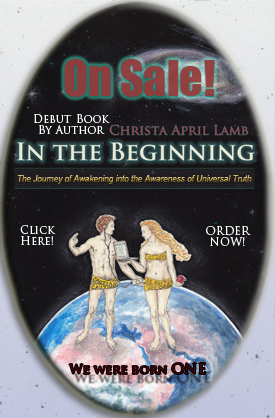Islam

The Kaaba is a cube-shaped building in Mecca and is the most sacred site in Islam. It has a mosque built around it, the Masjid al-Haram. Muslims around the world face the Kaaba during prayers.
| Quick Facts | | History | | Time Line | | Denominations | | Connection to other Religions | | Beyond Facts |
QUICK FACTS
Brief explanation:
Islam means “surrender,” or “submission,” to the will of God. Islam was founded by the prophet Mohammed, who was born in Mecca around A.D. 570 and settled in Medina around 622.A.D. Muslims believe Mohammed was the last and most important in a series of prophets, including Abraham, Moses and Jesus. The core practices of Islam are known as the Five Pillars — daily prayer, faith, fasting, pilgrimage and alms giving.
The five pillars in brief are:
1. The testimony of faith (shahada): “la ilaha illa allah. Muhammad rasul Allah.” This means, “There is no deity but Allah. Muhammad is the messenger of Allah.” A person can convert to Islam by stating this creed. The shahada shows that a Muslim believes in Allah alone as deity and believes that Muhammad reveals Allah.
2. Prayer (salat): Five ritual prayers must be performed every day.
3. Giving (zakat): This almsgiving is a certain percentage given once a year.
4. Fasting (sawm): Muslims fast during Ramadan in the ninth month of the Islamic calendar. They must not eat or drink from dawn until sunset.
5. Pilgrimage (hajj): If physically and financially possible, a Muslim must make the pilgrimage to Mecca in Saudi Arabia at least once. The hajj is performed in the twelfth month of the Islamic calendar.
Performing the Hajj is the fifth pillar of Islam. Hajj means to set out for a place and for Muslims that place is Mecca. It is mandatory for every Muslim to make the journey at least once in a lifetime. An estimated 2 million Muslims make this pilgrimage every year.
The two main branches of Islam are Sunnism and Shi’ism.
Muslims believe:
o There is only one God known as Allah
o In the prophets: The prophets include the biblical prophets such as Adam, Mose, and Jesus but end with Muhammad as Allah’s final prophet.
o In the revelations of Allah: Muslims accept certain portions of the Bible, such as the Torah and the Gospels. However, they believe the Qur’an is the preexistent, perfect word of Allah.
o In the last day of judgment and the hereafter: Everyone will be resurrected for judgment into either paradise or hell.
o In predestination: Muslims believe Allah has decreed everything that will happen. Muslims testify to Allah’s sovereignty with their frequent phrase, inshallah, meaning, “if God wills.”
o In Angels
Followers:
There are an estimated 2.1 Billion Muslims in the world.
Muslims worship by:
o Following the five pillars of daily prayer, faith, fasting, pilgrimage and alms giving.
o Performing good deeds for sake of God and for gaining his mercy and satisfaction. These deeds include: keeping good relations with people, doing work with honesty, being humble to parents, helping the poor and sick, being honest and faithful, not gambling, drinking, and having sex outside of marriage.
Important Holy dates, Holidays, or Seasons:
Information provided by Religioustolerance.com
o Al-Hijra/Muharram is the Muslim New Year, the beginning of the first lunar month.
o Ashura: For Sunni Muslims, Ashura is a day of fasting that was originally observed by Jews to recall when God saved the Children of Israel from the Pharoah in Egypt. Muhammad made it compulsory for Muslims as well.
For Shiite Muslims, Ashura recalls an event circa 680-OCT-20 CE in Iraq when an army of the Umayyad regime martyred a group of 70 individuals who refused to submit to the Caliph. One of the martyrs was Imam Husain, the youngest grandson of Prophet Muhammad. .
o Mawlid al-Nabi is a celebration of the birthday of the Prophet Muhammad, the founder of Islam in 570 CE. Sunni Muslims observed it on the 12th of the lunar month of Rabi’-ul-Awwal in the Islamic calendar. Shi’a Muslims celebrate it five days later. “The Mawlid al-Nabi was first observed around the thirteenth century and was preceded by a month of celebration. The actual day of Muhammad’s birthday included a sermon, recitation of litanies, honoring of religious dignitaries, gift giving, and a feast. The festival spread throughout the Muslim world and is celebrated in many countries today. However, some conservative sects (e.g., the Wahhabiyah) consider the celebration to be idolatrous.”
o Ramadan is the holiest period in the Islamic year; it is held during the entire 9th lunar month of the year. This was the month in which the Qura’n was revealed to the Prophet Muhammad. The first day of Ramadan is listed above. It is a time at which almost all Muslims over the age of 12 are expected to fast from sunup to sundown, unless they suffer from health problems which would make fasting dangerous.
o Id al-Fitr (a.k.a. “‘Id” and “Eid”) is the first day of the 10th month — i.e. the day after the end of Ramadan. It is a time of rejoicing. Houses are decorated; Muslims buy gifts for relatives. The words ” ‘Id” and “Eid” mean fesival.
o Id al-Adha (a.k.a. the Feast of Sacrifice or Day of Sacrifice) occurs during the 12th month of the Islamic year. This immediately follows the Hajj (pilgrimage to Mecca). It recalls the day when Abraham intended to follow the instructions of God, and sacrifice his son Ishmael. (This is not a typo; Muslims believe that Abraham was prepared to sacrifice his elder son Ishmael; Judeo-Christians believe that it was Isaac who was involved in the near sacrifice).
HISTORY
History gathered, collected and provided by the owner of Religion Facts.com
Our sincere thanks for their permission.
History of Islam
1. Historical Context of Islam
The Arabian Peninsula was originally the home of nomadic peoples who coped with the desert climate by migrating every season (“Arab” roughly translates as “desert dweller”). When some began to establish settlements around the fifth century BC, many chose Mecca, near the west coast of Saudi Arabia, as their home. It did not offer a favorable climate or many natural resources, but it was the site of the Ka’ba, a large cubical shrine dedicated to various deities.
The religion of the Arab world before the advent of Islam was an animistic polytheism. The desert was populated with fiery spirits called jinn. Numerous gods were worshipped, with most towns having their own patron god.
Mecca soon became the religious center, with 360 shrines, one for each day in the lunar year. Local merchants depended heavily on pilgrims to these shrines for their livelihood, a fact which would become significant for Muhammad.
Arab polytheism was focused entirely on the earthly life, and religion was not a source of morality. By Muhammad’s time, blood feuds, violence, and general immorality abounded.
Yet monotheism was not unheard of among the Arabs. There was contact with Zoroastrianism, which was the official state religion of Persia from the 3rd century BC to the 8th century AD and influential on its neighbors. It was a dualistic religion with beliefs in heaven, hell and a final judgment. In addition, both Judaism and Christianity had established a presence on the Arabian Peninsula, especially in the south. In Yathrib (later renamed Medina), the Jewish population was especially influential.
Even among the innumerable deities of Arabian polytheism was a god who was more impressive than the rest.Allah (Arabic for “the god”) was “the creator, provider and determiner of human destiny,” and “he was capable of inspiring authentic religious feeling and genuine devotion” (Smith, 225). In general, Allah was regarded as the greatest among the many gods deserving worship, but one contemplative sect, the hanifs, worshiped Allah exclusively.
It was into this world of sporadic monotheism and rampant immorality that Islam was born.
Early Life of the Prophet
Muhammad (whose name means “highly praised”) was born in Mecca in 570 AD. His father died shortly before his birth, and he lost his mother at the age of six. The young orphan was then raised primarily by his uncle, for whom he worked as a shepherd. At age 9 (some sources say 12), he joined his uncle on a caravan to Syria.
As a young man, Muhammad worked as a camel driver between Syria and Arabia. Soon he established a career managing caravans on behalf of merchants. Through his travel first with his uncle and later in his career, Muhammad came into contact with people of many nationalities and faiths, including Jews, Christians and pagans.
At age 25, Muhammad was employed by Khadija, a wealthy Meccan widow 15 years his senior. The two were married, and by all accounts enjoyed a loving and happy marriage. Early records report that “God comforted him through her, for she made his burden light.” Although polygamy was common practice at the time, Muhammad took no other wife than Khadija until her death 24 years later.
Divine Revelation
In his late 30s Muhammad took to regularly visiting a cave in Mount Hira, on the outskirts of Mecca, to seek solitude and contemplation. In 610, at the age of 40, Muhammad returned from one such visit telling his wife he had either gone mad or become a prophet, for he had been visited by an angel. The initially startled Khadija became his first convert.
Muhammad reported that while in a trance-like state, the Angel Gabriel appeared to him and said “Proclaim!” But like Moses, Muhammed was a reluctant prophet. He replied, “I am not a proclaimer.” The angel persisted, and the Prophet repeatedly resisted, until the angel finally overwhelmed Muhammad and commanded him:
Proclaim in the name of your Lord who created!
Created man from a clot of blood.
Proclaim: Your Lord is the Most Generous,
Who teaches by the pen;
Teaches man what he knew not. (Qur’an 96:1-3)
After receiving Khadija’s support, and additional angelic visits, Muhammad became confident he had indeed been chosen as the messenger of God and began to proclaim as he had been commanded.
Muhammad’s message to his countrymen was to convert from pagan polytheism, immorality and materialism, repent from evil and worship Allah, the only true God. He was always careful to clarify his role in God’s work – he was only a prophet. He was not an angel, he did not know the mind of God, he did not work miracles. He simply preached what he had received.
In the first three years of his ministry, Muhammad gained only 40 followers. And as his teachings threatened the Meccan way of life, both moral and economic, he and his followers experienced heavy persecution. It first took the form of mockery, but soon turned into open violence. Members of the small movement were stoned, covered in dirt as they prayed, beat with sticks, thrown into prison and refused service by merchants.
Hijira
Persecution continued to increase until Muhammad received some welcome news: he had gained followers in the city of Yathrib, 280 miles north of Mecca. The city was in need of a strong leader, and a delegation from Yathrib proposed that Muhammad take the job. In return, they pledged to worship Allah only, obey Muhammad and defend him and his followers to the death. Allah revealed to Muhammed his approval of this arrangement, and Muhammad made plans to escape to Yathrib.
The leaders in Mecca heard of the planned escape, and attempted to prevent it. But Muhammad and his close friend Abu Bakr managed to make a narrow escape north out of the city, evading a Meccan search party and arriving safely in Yathrib. This event is celebrated by Muslims as the Hijira. The year in which it occurred, 622, is the date at which the Muslim calendar begins. Yathrib was renamed Medinat al-Nabi, “the City of the Prophet,” and is now known simply as Medina, “the City.”
In Medina, Muhammad proved himself an able politician and statesman as well as a prophet.
Exercising superb statecraft, he welded the five heterogenous and conflicting tribes of the city, three of which were Jewish, into an orderly confederation…. His reputation spread and people began to flock from every part of Arabia to see the man who had wrought this ‘miracle.’ (Smith, 230).
Battle for Mecca
After establishing himself in Medina and accomplishing the job he had been invited to do, the people of Medina began several years of battle with Muhammad’s former home city. In 624, the Muslims won their first battle against the Meccans. As the latter had a much larger army, the former took the victory as a sign that God was on their side. However, a subsequent battle was not victorious, and Muhammad himself was wounded. But in 627, the Meccans attacked Medina, and Medina came out on top. The Prophet was not to lose again.
In 630, Muhammad and his forces marched to Mecca and defeated it. The Prophet rededicated the Ka’ba temple to Allah, witnessed the conversion to Islam of nearly the entire Meccan population, then returned to Medina. Muhammad died in 632, having conquered nearly all of Arabia for Islam.
Spread of Islam
By 634, Islam had taken over the entire Arabian peninsula. Within 100 years of Muhammad’s death, it had reached the Atlantic in one direction and borders of China in the other. This success was due in large part to the military and political abilities of Muhammad’s successors, the caliphs.
TIME LINE
Create timeline.
DENOMINATIONS
Denomination table
Find a Muslim Mosque now (link to directory)
CONNECTION TO OTHER RELIGIONS
BEYOND FACTS
Book recommendation and links.
Join Muslim Group(link to Muslim thread on site)
Find a Mosque now (link to directory)









